参考教程
http://billie66.github.io/TLCL/book/chap04.html
001#
date
cal
df
free
002#
pwd - Print name of current working directory
cd - Change directory
ls - List directory contents
[me@linuxbox ~]$ cd /usr/bin
[me@linuxbox bin]$ pwd
/usr/bin
[me@linuxbox bin]$ ls
...Listing of many, many files ...
Now, there is something important that I must point out here. In almost all cases, you can omit the “./”. It is implied. Typing:
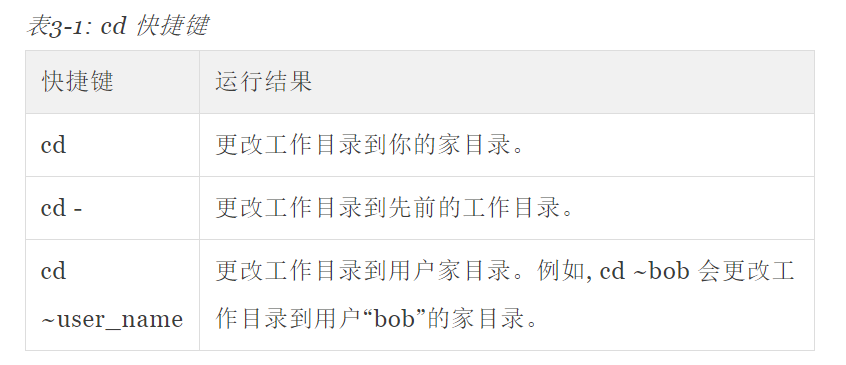
ls — 列出目录内容
file — 确定文件类型
less — 浏览文件内容
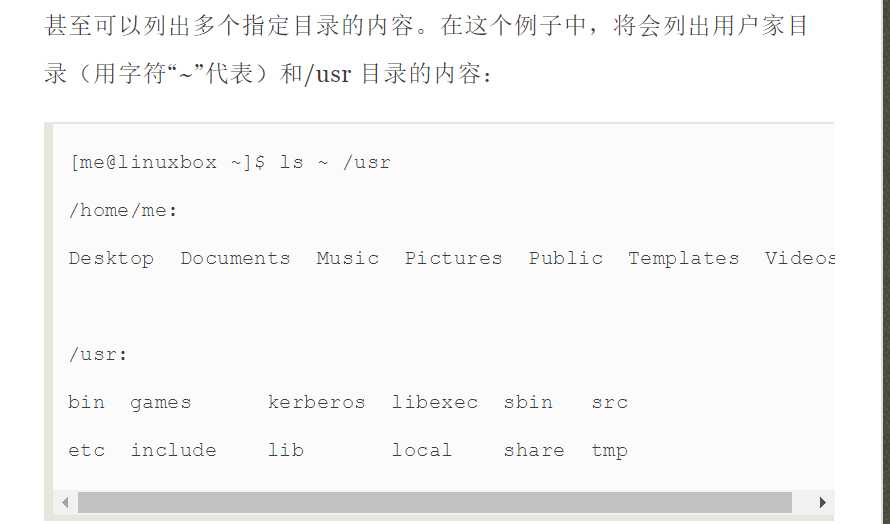
-l "长"模式


长模式并按照时间排序

反序输出
ls命令的参数表
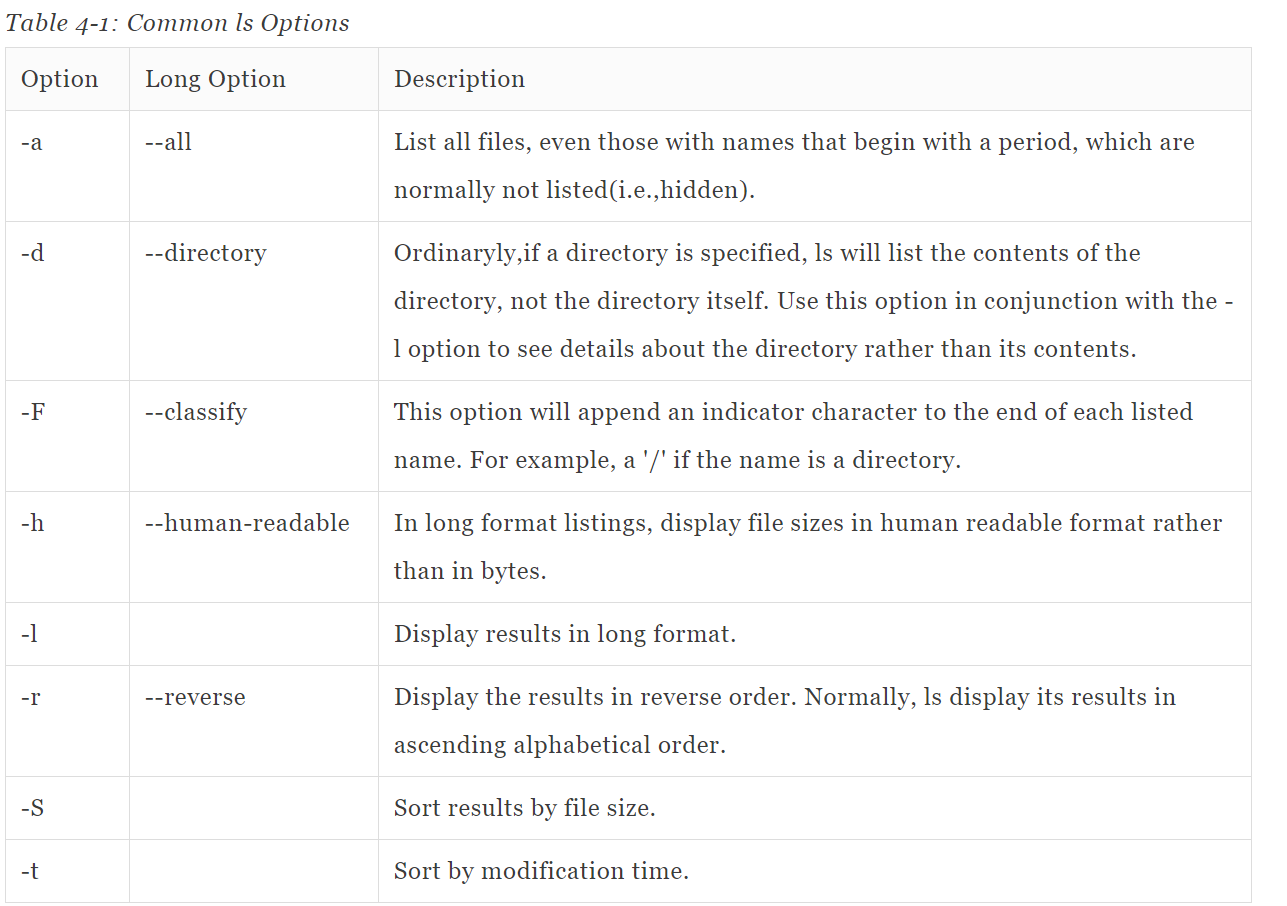
-l的长参数表含义


file filename
可以显示一些简单描述


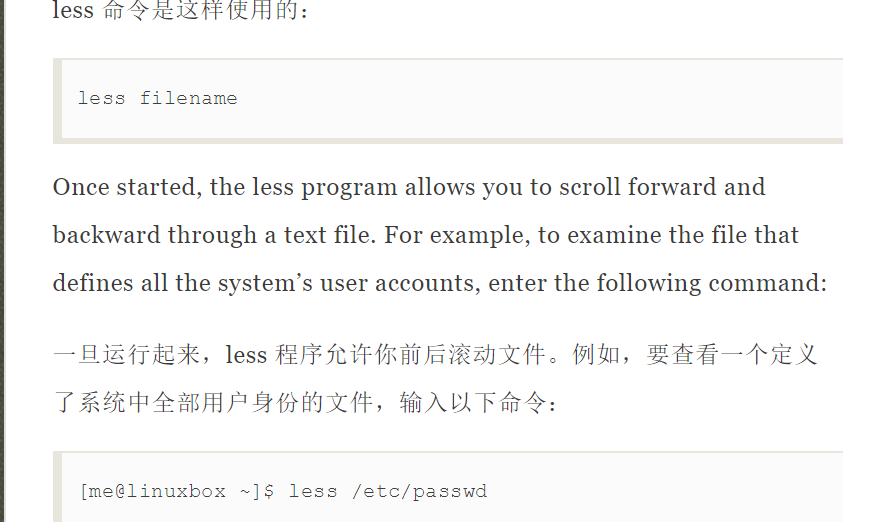
less可以用来浏览文版

less命令
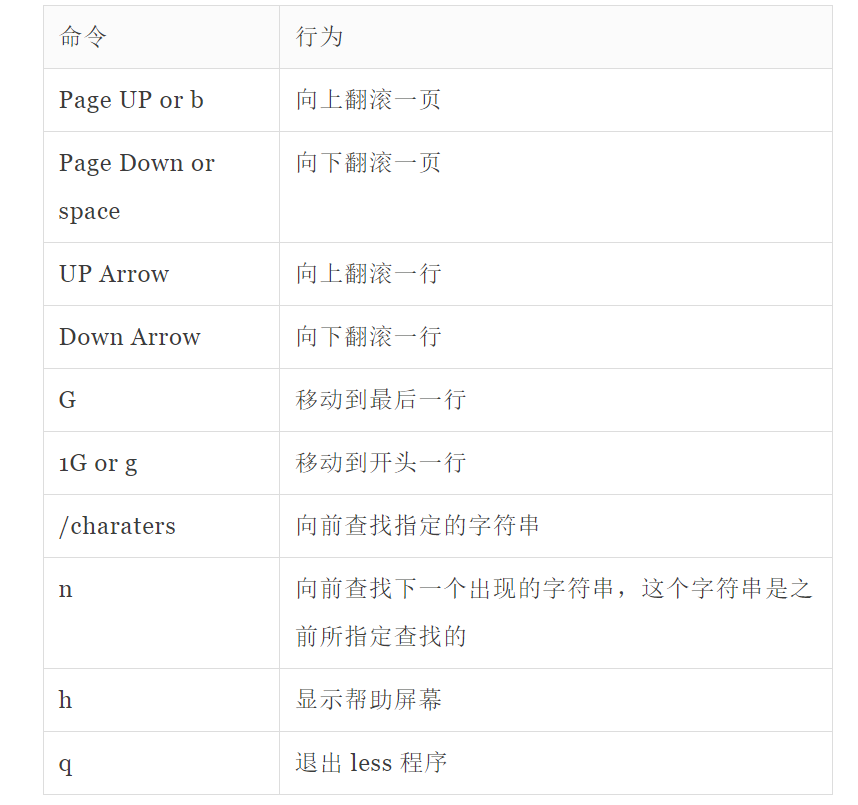

目录的详细功能#
太多不截了,在参考地址看吧
l 链接类型文件存在的意义
这就是符号链接存在至今的原因。比方说,我们安装了文件 “foo” 的 2.6 版本,它的 文件名是 “foo-2.6”,然后创建了叫做 “foo” 的符号链接,这个符号链接指向 “foo-2.6”。 这意味着,当一个程序打开文件 “foo” 时,它实际上是打开文件 “foo-2.6”。 现在,每个人都很高兴。依赖于 “foo” 文件的程序能找到这个文件,并且我们能知道安装了哪个文件版本。 当升级到 “foo-2.7” 版本的时候,仅添加这个文件到文件系统中,删除符号链接 “foo”, 创建一个指向新版本的符号链接。这不仅解决了版本升级问题,而且还允许在系统中保存两个不同的文件版本。 假想 “foo-2.7” 有个错误(该死的开发者!),那我们得回到原来的版本。 一样的操作,我们只需要删除指向新版本的符号链接,然后创建指向旧版本的符号链接就可以了。
( symbolic link)
还有一种hard link
文件操作###
cp – Copy files and directories
mv – Move/rename files and directories
mkdir – Create directories
rm – Remove files and directories
ln – Create hard and symbolic links
查找通配符

常用的字符类
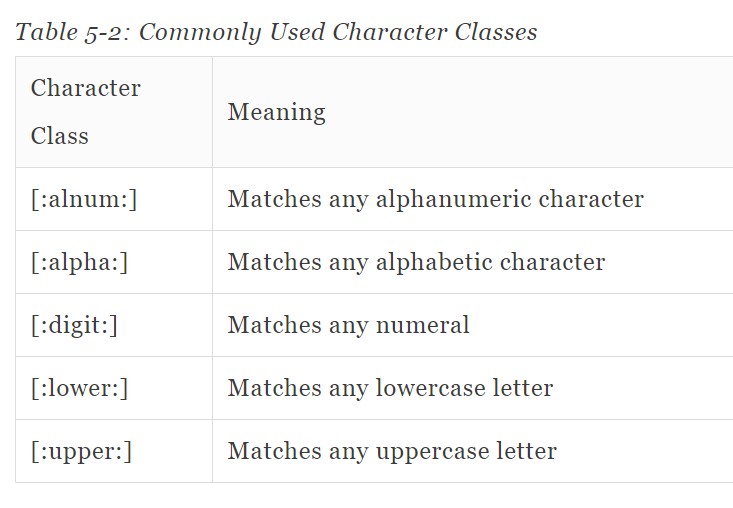
一些匹配的例子
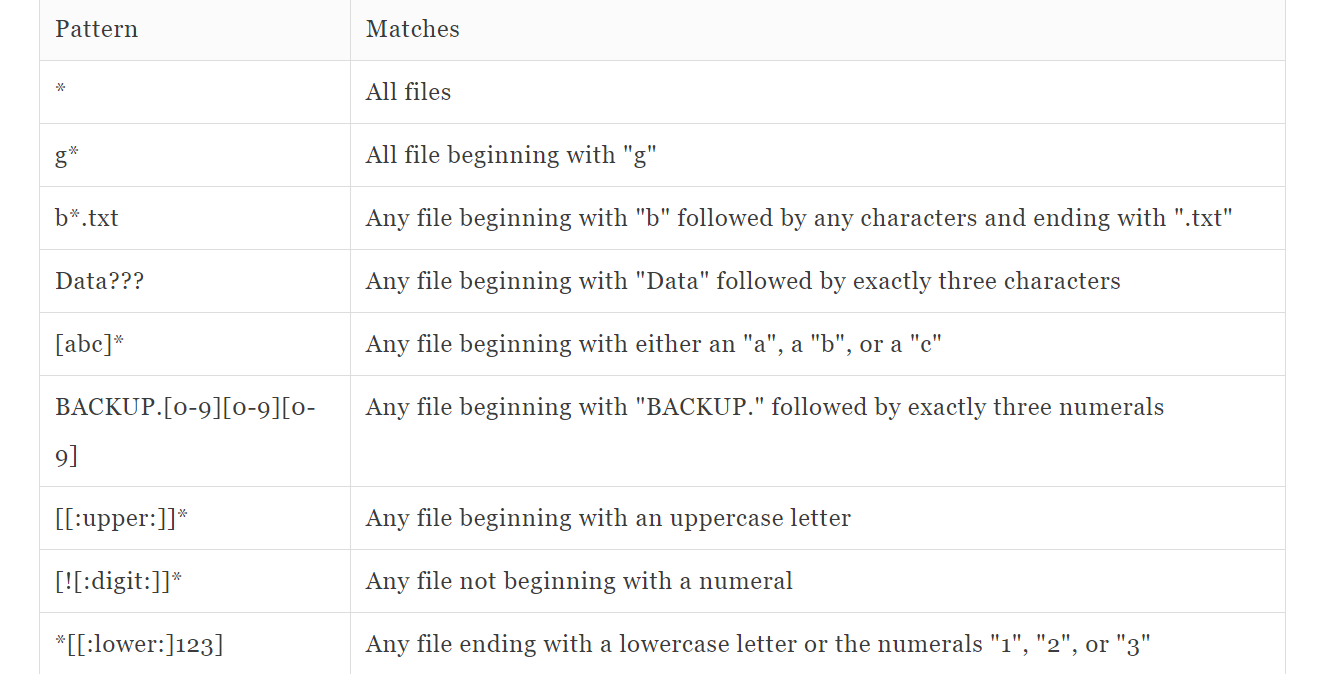
参数可重复(mkdir)

复制命令
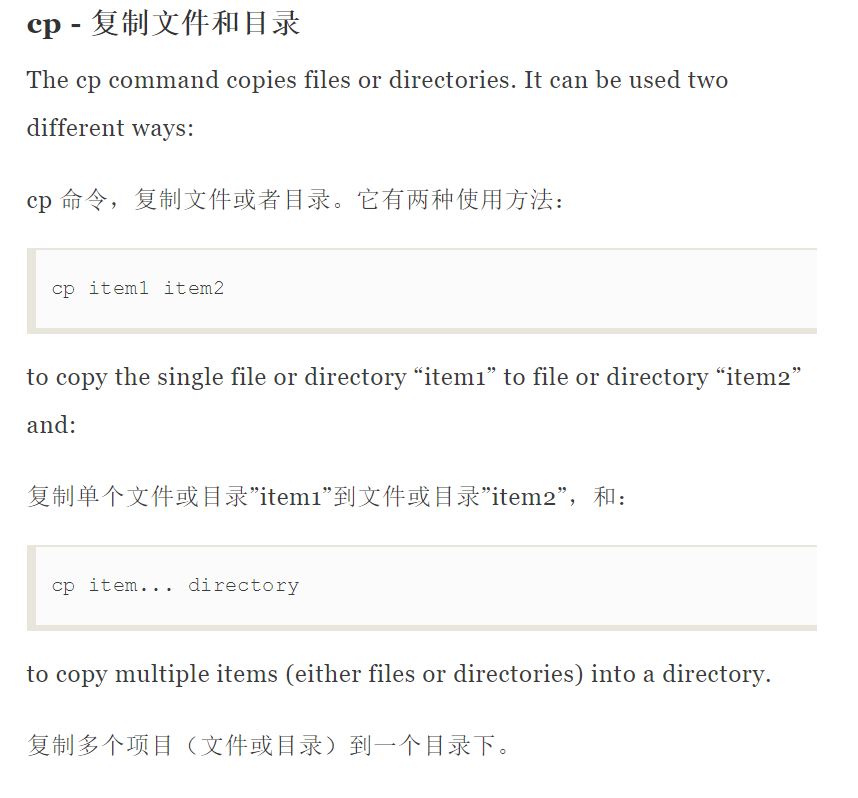
参数

mv命令(移动或者重命名

文件移动文件会重命名,移动到目录下则必须存再

一些例子
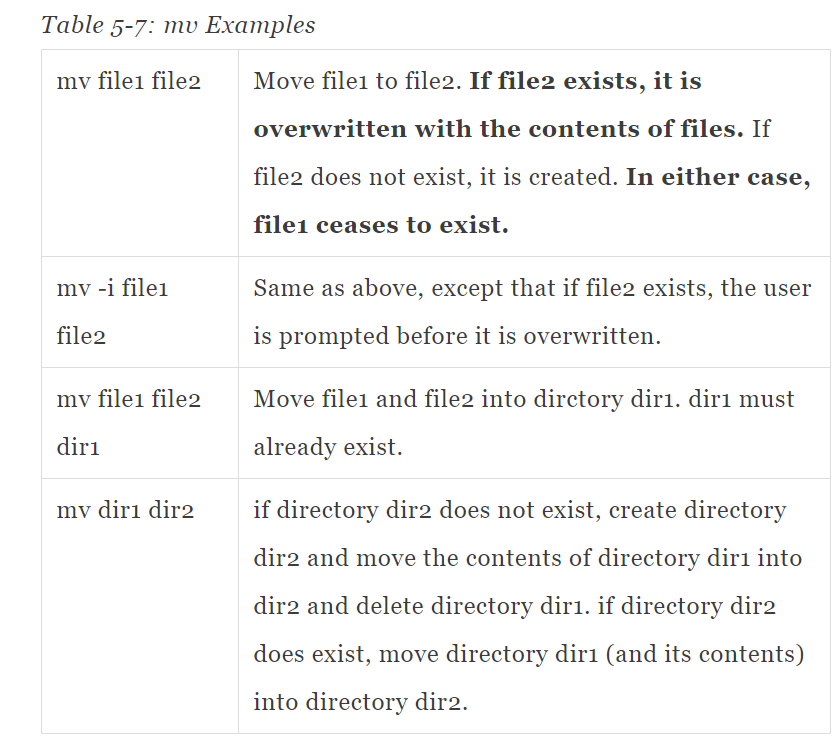
删除指令rm

...代表可以是多个

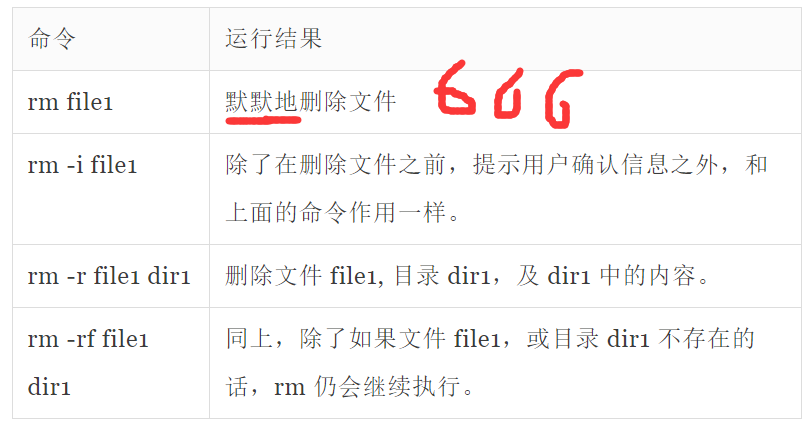
rm的风险
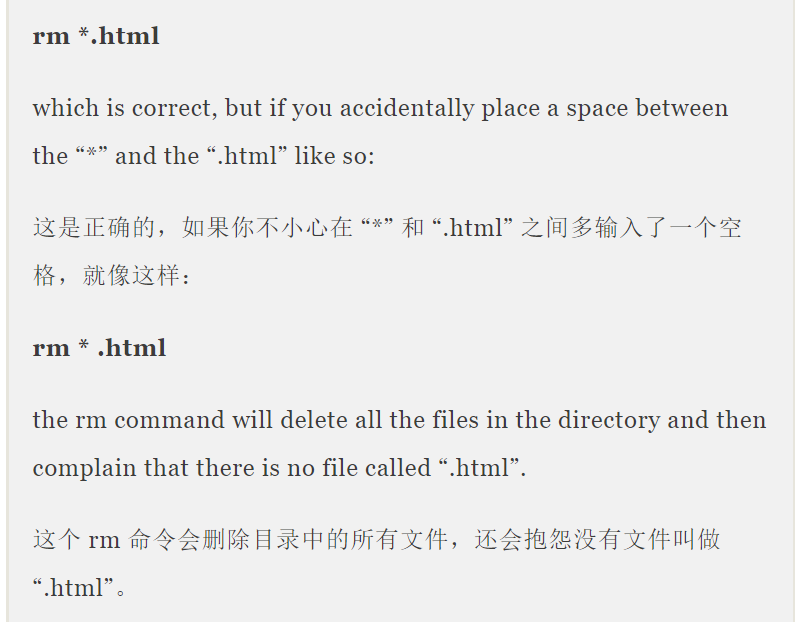
ln穿件链接命令
ln file link
ln -s itrm link
有-i时 会问你如何处理覆写

用-il可以看出来inode index 的值从而分辨硬链接
